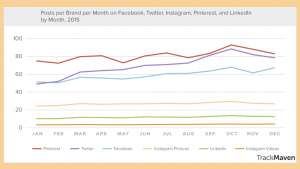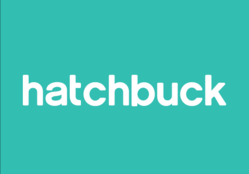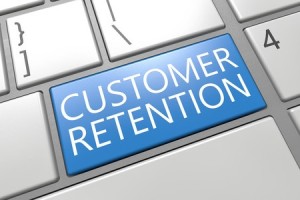Still in its early stages, Facebook Live is already proving to be a worthwhile platform for Dunkin’ Donuts, Tastemade and The Young Turks news network.

From exploding watermelons to moms in Chewbacca masks, Facebook Live is quickly proving its power to win a sizable number of viewers, comments and shares in a short amount of time.
Among the top brands and video producers using the platform, Dunkin’ Donuts, The Young Turks news network and the food-focused channel, Tastemade, all report seeing substantial engagement with their Facebook Live broadcasts.
Melanie Cohn, social media manager for Dunkin’ Donuts, says her brand saw success from the start with its first Facebook Live session back in February, giving fans a peek into the Dunkin’ Donuts kitchens.
“Because of this success, we decided to utilize the platform again on one of our favorite holidays, National Donut Day,” said Cohn.
Just last week, the brand featured its manager of donut excellence, Rick Golden, demonstrating a special recipe for a donut cake on Facebook Live from the kitchen at Dunkin’ Donuts’ corporate headquarters.
Tastemade’s head of programming, Oren Katzeff, says his team has already started experimenting with repurposing its Facebook Live footage for other platforms — most recently, using a portion of its Live Pancake Art video featuring an Adele-inspired pancake to celebrate the singer’s birthday on Snapchat.
The Young Turks news network’s chief business officer Steve Oh says his team is still in the experimental phase with Facebook Live but is already seeing strong results.
Today, Cohn, Katzeff and Oh all share how they are using Facebook Live to engage fans, and their plans for future content on Facebook’s live streaming platform.

Steve Oh, Chief Business Officer, The Young Turks
Facebook Live is something that we’re totally experimenting with. We don’t have any kind of preset agenda, we’re forming our strategy as we’re doing it.
We do it at rallies, and we do interviews — basically, Facebook Live video is super-easy to use because you can do it on your phone, and you can do it anywhere.
We even do some Facebook Live before our live show, which airs daily from 3:00 to 5:00 p.m. PT on YouTube, but now also on Facebook Live. We just have one of the hosts, or someone else from the staff that the fans are familiar with, say, “Hey guys, in half an hour, we’re gonna do the show. Today we’re gonna talk about X, Y and Z. Please tune in.”
On Facebook, because it’s a lot… less anonymous, people know exactly who you are. And oftentimes, people there are watching… and they’re sharing with their friends, they kind of tend to be a lot more friendly, a lot more substantive. And there’s an opportunity for them to throw, not just comments, but also emotions.
We’re working with Facebook to track what part of the video has more resonance with the audience — what part do they feel happy about? Angry about? Excited about? That kind of stuff.
I know Facebook is also looking at the ability to fast-forward to certain parts of the video. So if you’re a viewer, and you want to fast-forward to the parts that have the most engagement, you can do that. So that’s a very interesting concept that is super-brand-new.
The point of Facebook is to allow for much much greater interaction between the creator and the viewer, as well as between the viewers themselves.
Right now, we’re still just sorting things out, and on that particular note regarding the reactions. We haven’t done anything with that yet — that’s probably not going to happen for another month or two — but in terms of repurposing our videos from Facebook for other platforms, that is something that we are considering, mainly because the great thing about Facebook Live is that after the Live event is over, that video doesn’t just disappear, that video stays, and it continues to accumulate views as a video on demand.
In April, there was an event in DC called Democracy Spring. It’s an event where various progressive leaders protested certain issues where they think the government is wrong. They protested at the US Capitol, and they were arrested.
That was a multi-hour, multi-day event, so we didn’t know what to expect. We didn’t know if we would have 15 people watching or 15,000 people watching, but we can see, as Cenk [The Young Turks founder, Cenk Uygur] was walking — it was a march basically to the Capitol building — that engagement was growing with each step he took toward the Capitol.
You can feel the energy, and you can see the growth of the live stream. That was pretty interesting, and that was still pretty early on in our live streaming, so we really didn’t know what to expect.
There were a lot of comments, a ton of love and respect being shown to Cenk and others who were there. That was actually pretty inspirational.
We have a very general goal, and honestly, I don’t know if this goal will be implemented, or even taken forward, in the next six to 12 months, but we’ve always envisioned online video to be similar to television in that there will be a convergence of the two.
We’ve always envisioned a world where we are live streaming 24 hours a day with programming. And whether that live stream is on YouTube or Facebook or some other platform, we’re not certain, but that’s the direction we would like to be eventually. That we have 24 hours of live video.
So our strategy’s still forming, but generally, we want to do as much live content as possible on every platform, including Facebook.

Melanie Cohn, Social Media Manager, Dunkin’ Donuts
We’re always looking for new and innovative ways to engage with our Dunkin’ Donuts audience, and we saw Facebook Live as a perfect platform to do so. We became one of the first brands to utilize the platform with our first session in February 2016.
Our first video provided fans with a behind-the-scenes look into our kitchen for Valentine’s Day, featuring our culinary team preparing a cake made from heart-shaped donuts, and introduced a special February Dunkin’ Hearts Love contest, offering engaged couples a chance to win $10,000 for sharing their story of how their sweetheart proposed.
During our first Facebook Live session, we garnered great engagement and thousands of views, comments and likes in just a matter of minutes. Within 13 minutes, we had 21,000 viewers, which proves the stickiness of live video and wanting to know what’s next.
We saw one of our highest average view times ever on our Live video compared to pre-recorded video. This demonstrates the stickiness of live video.
It’s hard to get just three seconds of attention on video now, so we see Live as a huge driver of time spent with our content. Since you don’t know what will happen next, it keeps you watching longer.
We will continue to test Facebook Live and strategically utilize the platform for special occasions, sneak peeks and behind-the-scenes looks inside Dunkin’ Donuts that are truly unique to us.

Oren Katzeff, Head of Programming, Tastemade
One of the first ones we did was right in the middle of March. We did a latte art live. We shot it down here in Santa Monica at the café that’s right next to our studio. We had one of the leading latte artists create a bunch of cool objects in lattes.
Beginning with the month of April, and now going into May and beyond, we’re doing our 100-plus a month.
In our view, this is the early days of really understanding what works well on this particular platform and style. This is not unlike other opportunities that we’ve had as a company to entertain and delight our audiences on new platforms.
Of course, Facebook is nothing new to us, but the notion of being live on Facebook is. When you look at our history on YouTube, on Instagram, on Facebook itself, on Snapchat — we’ve always embraced the opportunity to engage with our audience in very unique and delightful ways.
It’s only been about six or seven weeks that we’ve really been going at this full speed, and we’ve been experimenting with a variety of formats.
One would be the latte art, and we did pancake art and smoothie art Live, where it’s really just been about the beauty of food.
I like to say that — like our dear friend Bob Ross of the Happy Trees — there’s an artistry and a beauty to watching beautiful things get made. There’s a little sense of being mesmerized, and then you really attach to the experience because you don’t see what’s being made until you invest some time in actually seeing the art develop.
Another thing the Live experience allows you to do is have a direct connection with the audience. They’re commenting. They’re asking questions. They’re suggesting things to be created. They’re guessing what it is, and you can have some real fun with that.
A second format has been the standard recipe Live, where it is somewhat similar to some of the recipe stuff you’ve seen us do, but it’s live. There’s a rawness to it, not everything is totally crisp. If there’s a mistake, you can’t edit it out.
I think the audience really enjoys — especially with the Tastemakers they know and love, and the ones that we feature a lot on the site — I think they really enjoy being part of that live experience.
Some of the latte art we’ve done performed very well. During just the Live portion of the show, we did over 1.4 million views. That’s why we’ve repeated that format, because the audience was really taken by it.
We had a pancake art in May that did over a million views during the live section.
We have a show called Tiny Kitchen, and we’ve done some Live Tiny Kitchen broadcasts. What’s interesting on that one is that it has real life beyond just the Live experience, because people really enjoy that show.
There was one that we did early this month that did over 100,000 views in a 20-minute segment, but then it had staying power beyond that — it’s over a million views total.
That’s what I think is the beauty of food-related content in general. There’s a live moment to it, and if you do it right, you can really get people engaged, and then hold their attention, and there’s some suspense to it.
If you do it the right way, there’s life to it beyond that live moment as well — and that’s what we’re really trying to experiment with and drive value out of it.
Tiny Kitchen is a great example because it’s a show with staying power and one that we really created first for Facebook because we thought the style would be fun for that audience. It’s a show that typically does anywhere from one to two million, with some that have done over 10 million views.
A recent example of a Tiny Kitchen that we did Live was a 13-minute episode that did about 250,000 views live during those 13 minutes, but then you fast-forward a week to 10 days after, and it did over three million views.
What’s great about Tiny Kitchen and doing it live, there are going to be things that have a very strong afterlife after the thing goes live. That was really encouraging to us — that we could take a concept that was very successful pre-recorded, but we could add a live aspect that from an audience standpoint allowed them to communicate with us as it was happening.
We want to introduce people to a lot of the cool sights and sounds and co0l things that are happen in the food space, really, all over the world. We’re doing lives in Brazil. We’re doing lives in Argentina, in Japan.
We’re really picking things and places and people and stories that are fun, that are engaging, that are relatable — that make the audience want to stay tuned and watch.
Marketing Land – Internet Marketing News, Strategies & Tips
(71)
Report Post







